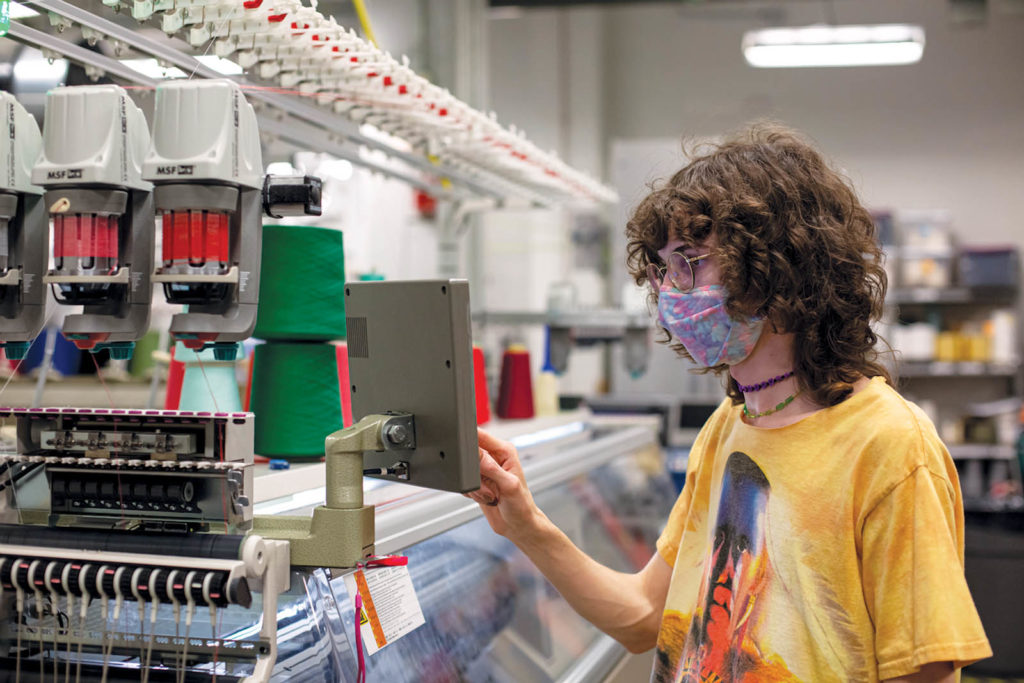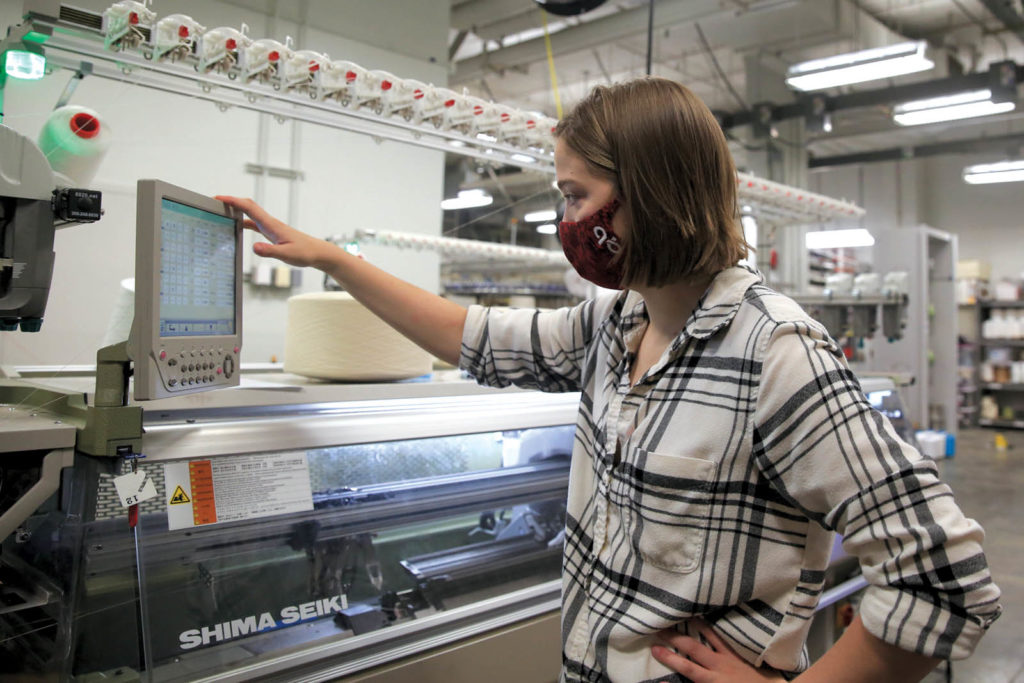
A research and development facility intended to spur business development, innovation, entrepreneurship and sustainability in the textile industry in North Carolina and points beyond is tentatively set to open for testing later this year, with a grand opening expected to take place in 2024.
The Wilson College of Textiles Flex Factory will comprise about 30,000 square feet inside the college building on Centennial Campus at North Carolina State University in Raleigh.
The factory will include classrooms, a showroom for manufacturers, vendors and others to display and demonstrate products, a prototyping area with cutting, sewing and spinning equipment, body scanners, 3D printers and other high-tech equipment, and flexible spaces for collaboration and sharing ideas.
Cassandra Kwon, assistant research professor at Zeis Textiles Extension for Economic Development (ZTE), says the factory will answer manufacturers’ needs for space where they can test new ideas, and rapidly develop prototypes without shutting down manufacturing lines in their own facilities.
“To use a piece of machinery for just a day causes a lot of delays and inconvenience for the manufacturers,” she says. “It’s abundantly clear to me and my colleagues that the factory is something needed to fill that gap.”
The factory will provide the equipment needed by manufacturers to produce prototypes on-site and to produce quick iterations of them, she adds.

“Everybody wants speed to market and to be able to test things as quickly as possible,” says Andre West, director of ZTE. “You can only do rapid prototyping if you have all the equipment at hand. If you have to go out and look for that equipment, the benefits of rapid prototyping go away. Here, at the Flex Factory, a manufacturer can do prototyping and pay for it as they need it.”
Showroom space also is needed by textile manufacturers and vendors that provide machinery or equipment for the industry to show and demonstrate their products. The factory, for instance, is slated to partner with Shima Seik, a Japanese company
that produces an automated glove knitting machine and wants to show its equipment at the factory.
“The showroom will be for companies that want to expose their latest and greatest equipment,” West says. “Others would have the opportunity to use the equipment or to see how it is used.”
Plans are still unfolding, and West noted that the final cost of the Flex Factory will depend on how many strategic partners it can line up who would use and help fund the facility.
Another goal of the facility will be to support sustainability by looking, for instance, at how to better use alternative fibers such as hemp.
The factory also will be used by students who will be trained on how to use the equipment and will gain the knowledge and skills needed to enter and succeed in the industry.
“We will have apprenticeships in this space,” says Melissa Sharp, associate director of ZTE. “We will be educating entrepreneurs and students on this machinery as part of day-to-day operations.”
The Flex Factory will also help veterans, youth, displaced workers and immigrants enter and advance in the workplace through workforce development grants.
Students completing capstone projects, a culminating assignment in which they often work with major textile manufacturers on a particular project, also will use the facility.
As the industry strives to attract more workers, the factory also will experiment with automation, robotics and other technologies that have the potential to reduce the need for workers and decrease the number of hours required to create a finished product.
West says planning for the facility is taking place now and will benefit from the input of manufacturers, entrepreneurs, students and others in the industry.
The space also will continue to evolve even after it is up and running.
“We are here to talk to the industry about what they need,” West says. “We don’t see this as a space that is static. We want industry to be involved in this space.”
West says the Flex Factory will be unique.
“There may be something like this in Hong Kong or China, but I don’t think there is anything like this in the Western Hemisphere,” he says.
Annemarie Mannion is a freelance writer based in Willowbrook, Ill.
 TEXTILES.ORG
TEXTILES.ORG


